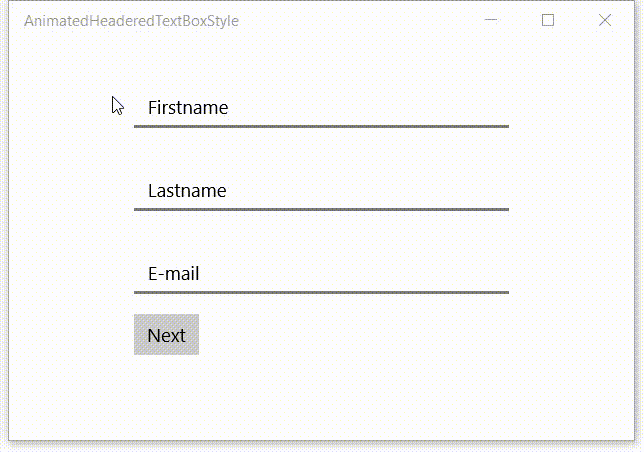On Monday, the Windows Developer team announced the preview release of the Windows UI Library (WinUI). The WinUI NuGet packages contain new and popular UWP XAML controls and features which are backward-compatible on a range of Windows 10 versions, from the latest insider flights down to the Anniversary Update (1607). Windows developers will no longer need to wait for their users to adopt the latest Windows 10 release in order to provide some of the rich features provided by these packages.
Read the get started article or use this quick step-by-step guide.
Microsoft also published a Sample app on GitHub named XamlUiBasics. The dev branch already contains demos of the new SplitButton, ToggleSplitButton. DropDownButton and the Repeater control. There is not much WinUI documentation available yet so we have to figure out how it works using the sample code.
I have used Visual States in XAML a lot. It all started in Silverlight, now I use it in my UWP apps. I often generate them in Blend for Visual Studio using recording. Blend used to generate Storyboards but with the current version generates Setters (UWP only). This is better, makes them easier to write and read. It is a bit buggy but I expect (hope) it will be fixed soon. A lot of developers are mistakenly not using Blend. They only use Visual Studio which doesn't support the great States feature of Blend. Writing the Visual States yourself can then be a lot of work.
To help those developers I have created an app called Xaml Diff. It generates the Visual State Setters using a diff analysis of your named elements in your XAML. It is free and you can download it from the Microsoft Store.
In a LOB application it is very common to have headers above an input controls (TextBox, ComboBox, Pickers, etc.) which also indicates that the data is required. This can easily be implemented in a XAML/UWP application using the HeaderTemplate property of the input controls.
Recently I used Conditional XAML for the first time in one of my UWP apps. I wanted to use a ColorPicker control which is only available in the Fall Creators Update (version 1709, build 16299). The Microsoft documentation explains what Conditional XAML is really well.
Conditional XAML provides a way to use the ApiInformation.IsApiContractPresent method in XAML markup. This lets you set properties and instantiate objects in markup based on the presence of an API without needing to use code behind. It selectively parses elements or attributes to determine whether they will be available at runtime. Conditional statements are evaluated at runtime, and elements qualified with a conditional XAML tag are parsed if they evaluate to true; otherwise, they are ignored.
Conditional XAML is available starting with the Creators Update (version 1703, build 15063). To use conditional XAML, the Minimum Version of your Visual Studio project must be set to build 15063 (Creators Update) or later, and the Target Version be set to a later version than the Minimum. See Version adaptive apps for more info about configuring your Visual Studio project.
While testing my app I noticed that it can be a little tricky when you combine it with {x:Bind}. Let me explain this using a simple demo.
Windows (UWP) apps use animations to enhance the user interface or to make it more attractive without annoying your users. One way you can do this is to apply animated transitions to UI so that when something enters or leaves the screen or otherwise changes, the animation draws the attention of the user to the change. As you can read in the documentation (Animation overview) you can use the reposition animations (RepositionThemeTransition) to move an element into a new position. For example changing the position (Row/Column) of an item in a Grid.
Last week I blogged about the new Spacing property in StackPanel that is introduced in the new Windows 10 SDK Preview Build 16225 (Fall Creators Update/CU2). Today I want to explain the new ColumnSpacing and RowSpacing of the Grid control. The RowSpacing can be used to set the amount of space between each row. The ColumnSpacing can be used to set the amount of space between each column. It allows you to create gutters between the rows and columns.
A few days ago Microsoft released the new Windows 10 SDK Preview Build 16225 (Fall Creators Update/CU2). While browsing the 'API Updates and Additions' I noticed there is a new Spacing property for the StackPanel control. You can use it to set the amount of space between each child element. The StackLayout control of Xamarin Forms already had this property. This will make it easier to add this property to the XAML Standard.
Last week I wrote a blog item about the XAML Animated Headered TextBox Style. I got a lot of reactions on Twitter. Pieter Otten challenged me into adjusting my solution to make it conform the Material Design guidelines. In Android the header (Label) of the TextBox (Text Field) animates on Focus not when you enter a value. I tried to implement this by adjusting my style but that didn't work. I had to introduce an extra behavior to get it to work. See the result in this video.

A while ago I saw a beautiful effect in an Android app which I was using. It had textboxes with a placeholder text. This placeholder text moved to the header when you enter the first character in the textbox. This triggered me to do the same in a Windows 10 XAML app (UWP). This is a video of the result.

XAML is very powerful. I have blogged about behaviors a lot. They are great but also have limitations. You can only drag them on Controls, not on Storyboards. To "fix" this I came up with a solution using Attached Properties. The designer support isn't as good with Behaviors but who needs that if we have IntelliSense.

